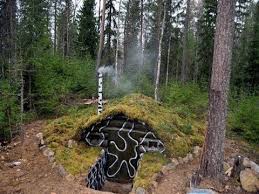Bugging Out to a new, safer location is not something that many of us look forward to. Unfortunately, it is not something that we may have many choices over, especially if you live in South Africa at this time. Then there is the prospect of living in a tent or caravan for long periods. In the heat of summer and cold of winter, it will not be a pleasant experience.
It will be far better to be able to build a semi-permanent home structure to afford your family some protection from wind, rain, and heat. Cold and fires. Unfortunately, not many people will have the capital to buy or build conventional homes again in another area. That leaves building their own semi-permanent home structure.

Learn The Skills Now
In this article about Semi-Permanent Home Structures For The Prepper – A Step Up From A Tent I will show you a few options that you might have. Reading this article will give your ideas but, you will have to ensure you have the tools and skills to build them, and waiting until you need those skills might be too late to learn them.
You will need to know about safe structures to ensure that your home does not collapse on top of you. A good idea would be to decide on the type of home you want to build now, find drawings or plans and you can then ensure that you have time to learn the skills and collect easy-to-carry multi-task tools that you will need to build.
When you make your decision on what you would like to build, you need to consider what might be available to build with, remembering that there will be many others competing for the building materials.
9 Steps for Building Any Shelter
- Find the best place to build your shelter considering, wind and weather direction and defensive position
- Decide on the design of your shelter
- Find or create something to support your shelter
- Find the needed building materials
- Construct your shelter frame
- Build a doorway
- Cover the frame
- Make a floor
- Create a door of some kind
Select the Right Position For Your Shelter
Careful selection of the site of your shelter plays an important part in what you can build there. If you want to build a stone shelter and the area is sandy, you will have to cart the stone some distance if you find any at all. You need to consider a few things when you look for a suitable site:
- Which side does the weather come from?
- How far are you from the water?
- How many homes are there or are being built there?
- Where will you build your toilet and where are you in relation to other people’s toilets?
- Fire hazards. Fires tend to be an issue when there are a lot of people in temporary shelters.
- Can you defend the position?
- How far are you from building material?
Building Ideas
Here are a few ideas for semi-permanent family shelters that you can use to get the ideas going. Remember to choose a plan that is going to suit your needs and conditions.
Semi Sunken Earthenroof House
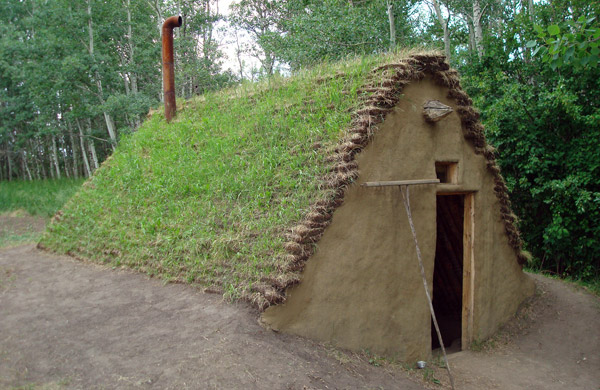
This type of home dates back as far as 6000 years. It is a half-dugout shelter somewhere between a sod house and a log cabin, usually with a floor that is 1 – 1.5 meters underground level.
It has the advantage of being less visible and more fire-resistant. It will also moderate the temperatures in winter and summer. This house build will use mostly local materials. It also has the added advantage of being able to accommodate a chimney for a stove.
The Stone Home
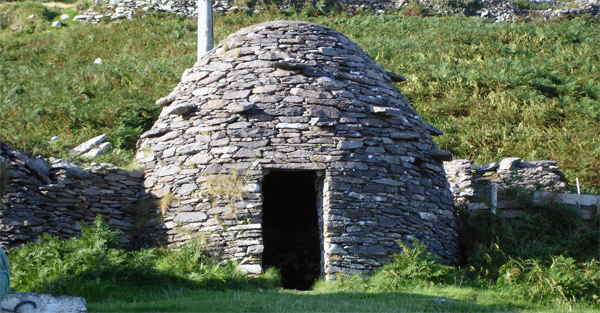
This dry-stone hut with a corbelled roof is commonly associated with the southwestern Irish seaboard. Dry-stone is a building method where you use stones without any mortar to bind them together, and these structures get their strength from congressional forces and the interlocking of the stones.
To use this method you will have to be in an area that has plenty of flat stone.
The Log Cabin
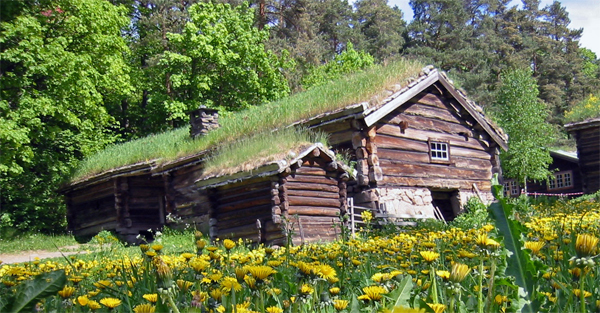
Building a Log home is only practical where there is an abundant supply of trees. Such a home takes a lot of wood and work. It has the additional disadvantage of being vulnerable to fire and, in South Africa, Termites.
The Mud Dwellings

Anyone living in South Africa knows about this type of structure as it is the traditional African building method but don’t be deceived. This method is ideal when you are short of capital and/or building material. As you can see from the images above and below, this method can be used to build a fairly large and versatile dwelling.
It also has the advantage of being more fire-resistant, especially if you do not thatch the roof. It is warmer in winter and cooler in summer.
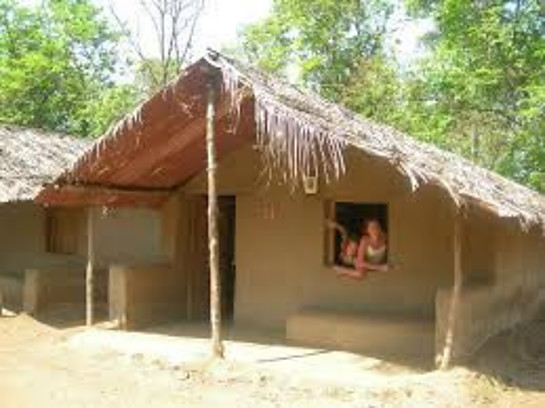
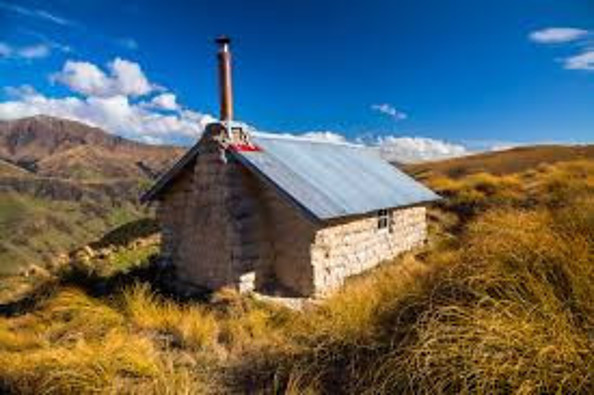
As you see above, a mud house can be built and decorated to be quite comfortable.
The Earthen House
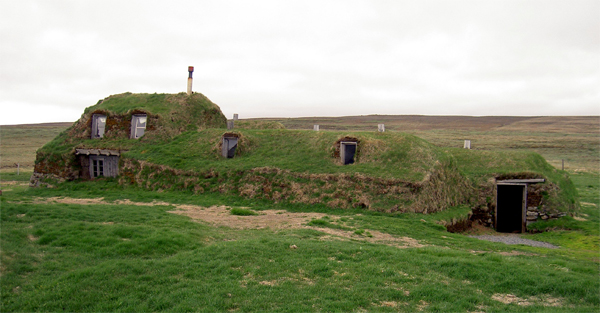
Turf house in Sænautasel, Iceland.
“In the old days, you’d find several types of earthen houses around the world. These are semi-subterranean houses, sheltered by the surrounding earth on three or four sides with a roof on top. The main benefit of the earthen house is that you’re sheltered from both cold and wind by the earth, and if you face large windows towards the south you can potentially heat your home 100% passively from the sun.”
Earthbag Building
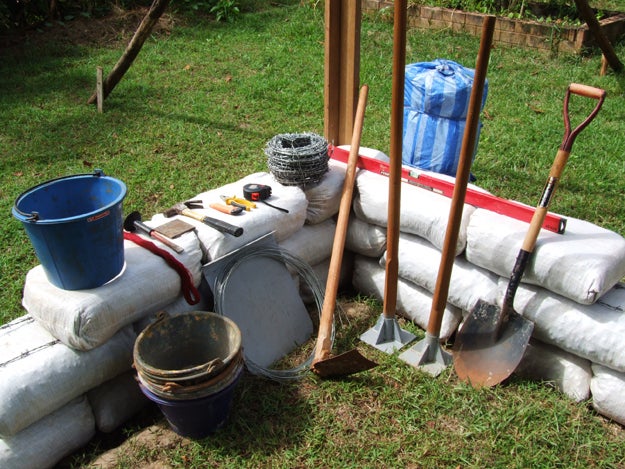
If You have planned well and have enough bags, you can build an Earthbag Structure. This is a sturdy, quicker to build structure that will afford you a great Semi-Permanent Home Structure.
It is an easier structure to build and the entire family can help.
Lay the Roof
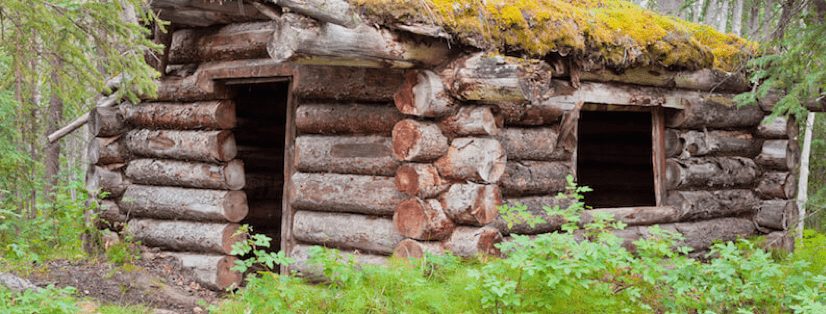
Laying the roof is the most challenging part of making any type of cabin. Making a survival cabin is no different, it is tricky. The aim is to create two opposite gable walls. A gable wall is basically the end of the wall with a triangle on top of it.
Depending on what you are using for roofing, you will generally need to have strong poles for support, especially if you are covering the roof with live grass.
Plan Now
If you follow the advice, you will develop a plan now, before the SHTF. You will learn the skills, Teach your family and collect the stores and tools. Having done this, you will know what area you will be travelling to and what the conditions are there. Knowing this, you can decide on one or two styles and designs and you can practice the skills that you would need.
Don’t wait until you run out of time. You might only need these skills in a year, but you might need them next week. Hopefully, we will never need them!
If You have any comments, advice or questions please leave them below or contact us here.

“It is better to have prepared and never to need it than to be unprepared and be in desperate need of it”.
Be Aware. Be Safe. Be Prepared!

